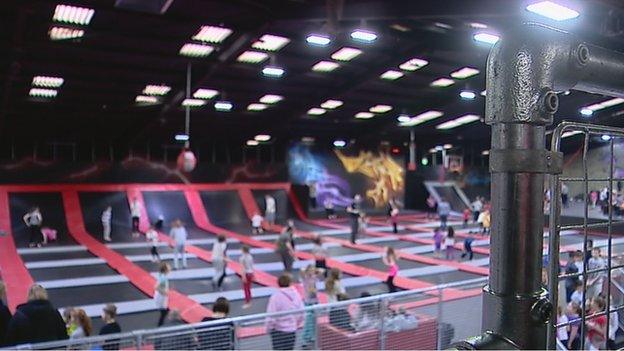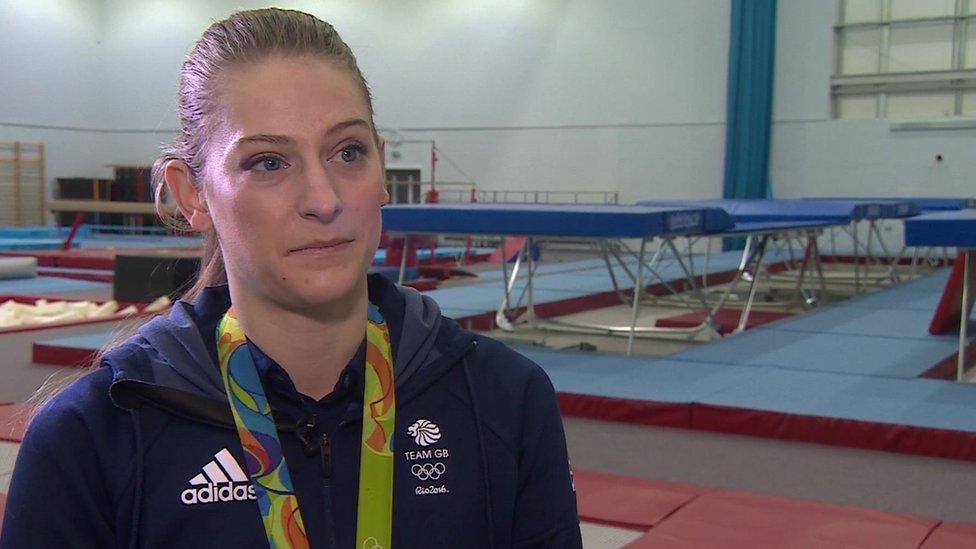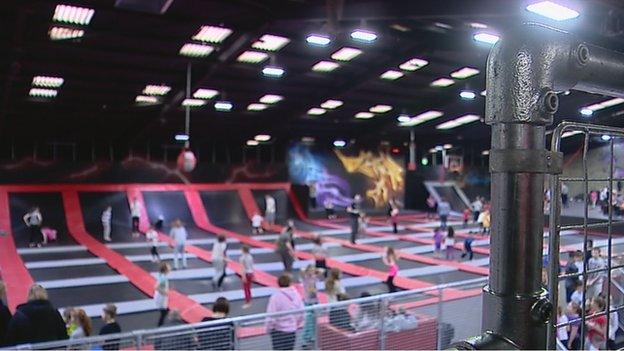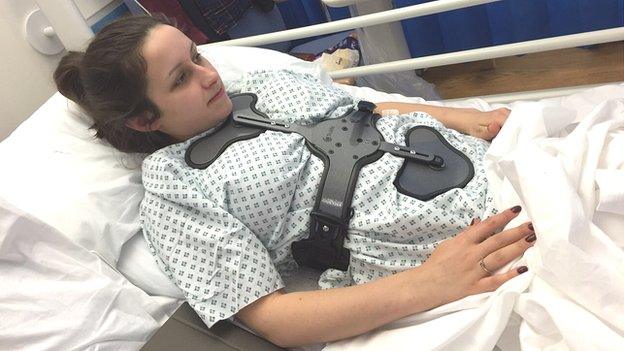Trampoline parks 'need more safety measures'
- Published
- comments

The group wants trampoline parks to abide by their suggested safety guidelines
There should be more safety measures in place at trampoline parks, a group of organisations including British Gymnastics has said.
The group has written a series of rules which they believe will make trampoline parks safer.
Although parks have to meet health and safety regulations, there are no rules on how they are built and run.
But Angela Nash from Rebound trampoline park in Leicestershire said safety was their main priority.
"Here they have to wear grip socks, hair tied back, you're not allowed to wear jewellery, they all go through a safety briefing video which shows them the dos and don'ts," she said.
Indoor trampoline parks are usually made up of several trampolines next to each other. They can include slides, see-saws and bridges to jump off.
There are no figures on how many people have hurt themselves while trampolining, but the call comes after a park in Dalkeith, Midlothian, reported more than 100 incidents in three weeks last year. It was later closed down.
'Safer environment'
There are 13 organisations in total backing the draft guidelines, including the International Association of Trampoline Parks and the Royal Society for the Prevention of Accidents (RoSPA).
Rules suggested by the group include lighting all the rooms well so that there is clear visibility and padding any wall or similar obstacle that is within 1.5m of an area where trampolines may be dismounted.
Olympic silver medallist Bryony Page, who became the first British woman to win an Olympic trampoline medal in Rio this year, told the BBC: "Trampoline parks are a good place to get started.
"But the main thing there is there need to be safety guidelines that are set so people can understand where the dangers might occur and they can have a fun time in a safer environment."

Olympic silver medallist Bryony Page said safety guidelines should be set
RoSPA said: "The guidelines, published as draft for consultation until 1 December 2016, seek to help park managers identify the key risks at both the design and operational stages, with the aim of establishing an effective approach to managing - but not entirely removing - the risk of injury to customers and staff."
RoSPA said once the guidelines are finalised, it would like to see all existing commercial trampoline centres declare their compliance within 18 months.
According to the International Association of Trampoline Parks, the number of trampoline parks in England and Wales has increased from just six at the end of 2014 to almost 100 in 2016.
Doctor Tina Newton, from Birmingham Children's Hospital, told the BBC that injuries from trampolining can be severe, especially from those used at home.
She said: "I've seen broken arms, broken legs, legs getting stuck in springs, children falling off and occasionally nasty head injuries, but usually broken arms and legs."

Number of trampoline parks in England and Wales
November 2014 - six parks
November 2015 - 32 parks
November 2016 - 98 Parks, with two more expected to be open by Christmas
Source: International Association of Trampoline Parks, external

- Published25 February 2015

- Published20 February 2015
